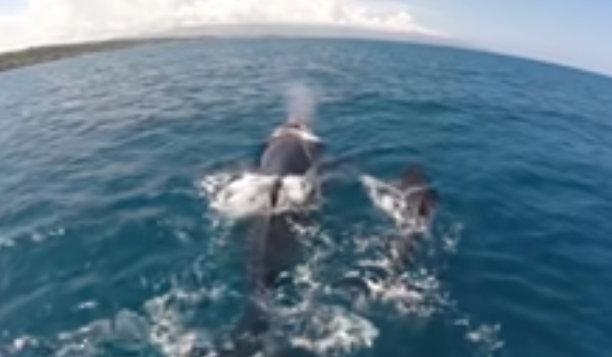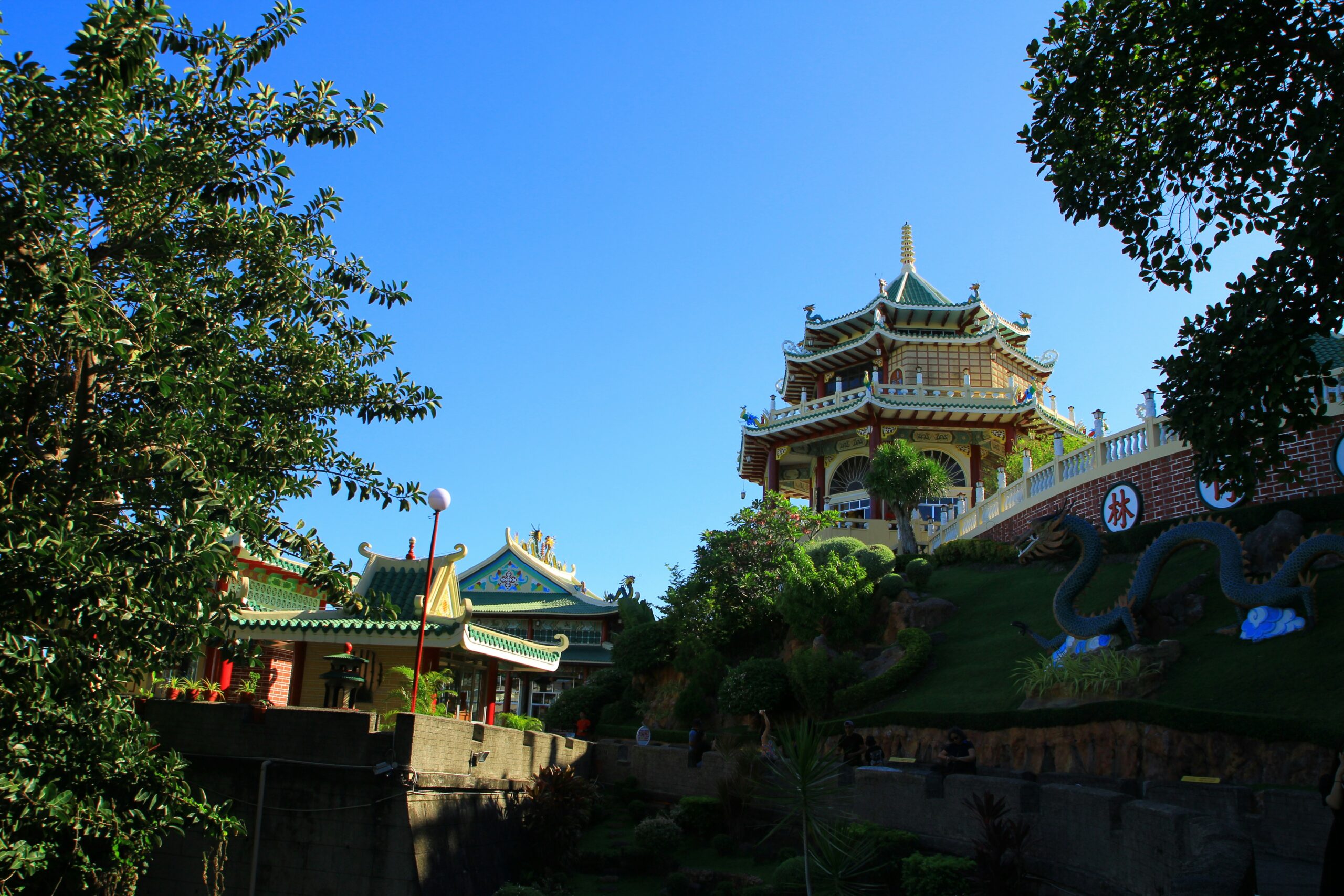Exploring the Pacific Ocean: Wonders and Travel Tips

Exploring the Pacific Ocean: Wonders and Travel Tips
Pacific Ocean
The Pacific Ocean, the largest and deepest of the world’s oceanic divisions, covers more than 63 million square miles. Spanning from the Arctic Ocean in the north to the Southern Ocean in the south, it is flanked by Asia and Australia on its western boundaries and the Americas to the east. The name “Pacific,” meaning peaceful, was bestowed by the explorer Ferdinand Magellan during his circumnavigation of the globe in the early 16th century. Despite its vastness, the term can be somewhat misleading considering the violent weather patterns and seismic activity prevalent in various parts of the ocean.
The sheer size of the Pacific Ocean makes it a crucial component in global biodiversity and climate regulation. It encompasses numerous ecosystems, ranging from frigid polar waters to the warm, tropical corals. This diversity supports an array of marine life, making it a focal point for both ecological study and conservation efforts. The ocean is not only home to a remarkable variety of species but also plays a vital role in maintaining Earth’s climate by redistributing heat through ocean currents.
Historically, the Pacific Ocean has been a critical route for exploration, trade, and cultural exchange. From the ancient Polynesians who navigated its waters using stars and ocean swells to modern-day shipping lanes that facilitate a significant portion of global commerce, the Pacific’s influence on human civilization is profound. It has been the stage for numerous historical events, including pivotal battles of World War II, and continues to be a strategic and economic powerhouse in contemporary times.
Bordering more than 40 countries, the Pacific Ocean’s coastline is marked by an array of landscapes ranging from dense tropical rainforests to arid deserts. These coastal areas are not just aesthetically spectacular but also strategically important, providing resources and opportunities for commerce and habitation. Understanding the Pacific Ocean is thus essential for appreciating its vast breadth, ecological significance, and historical impact.
Geographical Features and Marine Ecosystems
The Pacific Ocean is a vast expanse showcasing an array of unique geographical features and rich marine ecosystems. As the largest and deepest of the world’s oceans, it is home to a multitude of volcanic islands, deep ocean trenches, and extensive coral reefs. These geographical features play a pivotal role in fostering the incredible biodiversity found within the Pacific waters.
One of the most notable features of the Pacific Ocean is its numerous volcanic islands, formed due to the ocean’s underlying tectonic activity. These islands, including the famous Hawaii archipelago, owe their existence to the Pacific Ring of Fire – a seismically active zone where tectonic plates meet, creating frequent volcanic and seismic activity. This geological phenomenon not only leads to the formation of islands but also contributes to the dynamic nature of the ocean floor, which features some of the deepest trenches known to man.
The Mariana Trench, for instance, is the deepest part of the world’s oceans, plunging to a depth of approximately 36,000 feet. This trench and others like it are critical to our understanding of marine ecosystems and geological processes. They provide unique habitats for specialized forms of life, some of which are yet to be fully discovered and understood.
Coral reefs are another significant geographical feature of the Pacific Ocean. These vibrant ecosystems, often referred to as the rainforests of the sea, support a high diversity of marine life. The Great Barrier Reef, located off the coast of Australia, is the largest coral reef system in the world and a UNESCO World Heritage Site. Coral reefs not only serve as habitats for marine species but also protect coastlines from the damaging effects of waves and storms.
The physical characteristics of the Pacific Ocean, such as its currents, waves, and tides, also contribute significantly to its biodiversity. Ocean currents, like the powerful Kuroshio Current, play a crucial role in regulating climate and distributing nutrients across vast distances, supporting marine life from plankton to large marine mammals. Additionally, the varying patterns of waves and tides contribute to shaping coastal ecosystems and influencing the daily lives of marine organisms.
In essence, the Pacific Ocean’s geographical features and marine ecosystems are crucial in sustaining its rich biodiversity. Understanding these elements enhances our appreciation of this majestic body of water and underscores the importance of conserving its natural treasures for future generations.
The Role of the Pacific Ocean in Climate and Weather
The Pacific Ocean, the largest and deepest of Earth’s oceanic divisions, plays a pivotal role in shaping global climate and weather patterns. One of the most crucial phenomena influenced by the Pacific Ocean is the El Niño-Southern Oscillation (ENSO), which includes both El Niño and La Niña. These periodic fluctuations in sea surface temperatures and atmospheric conditions in the central and eastern Pacific have profound impacts on weather systems worldwide. El Niño, characterized by warmer-than-average sea surface temperatures, often leads to dramatic weather changes such as increased rainfall in the southern United States and Peru, and drought conditions in Australia and Southeast Asia.
Conversely, La Niña represents the cooler counterpart, bringing its own set of climatic disruptions. La Niña typically causes wetter conditions in Australia and Indonesia, and drier climates in the southwestern United States. Both these phenomena can lead to severe weather events such as floods, droughts, and hurricanes, and profoundly affect agricultural productivity, water resources, and even human health.
Beyond ENSO, the Pacific Decadal Oscillation (PDO) is another significant pattern affecting long-term climate variability. The PDO is a long-term ocean fluctuation of the Pacific Ocean, which shifts between warm and cool phases approximately every 20 to 30 years. The warm phase is associated with warmer coastal ocean temperatures in the eastern Pacific and cooler temperatures in the central North Pacific. The cold phase presents the opposite conditions. These shifts can influence global climate in multiple ways, including altering the strength and position of the polar jet stream, and impacting seasonal weather patterns across North America and Asia.
Understanding these complex interactions between the Pacific Ocean and global climate systems is essential for predicting and mitigating the effects of natural disasters and managing agricultural productivity. The Pacific Ocean’s influence underscores its central role in the Earth’s climatic equilibrium, making its study vital for sustainable development and environmental stewardship.
Human Interaction and Economic Importance
The expanse of the Pacific Ocean has been a canvas for human ingenuity and resilience throughout history. Earliest interactions can be traced back to ancient civilizations which utilized intricate navigation techniques to traverse its vast waters. The Polynesians, for example, employed an advanced understanding of stars, waves, and wildlife to journey across enormous distances, connecting islands and fostering cultural exchanges.
Beyond navigation, the Pacific Ocean has served as an essential resource for fishing industries, which have been pivotal to the sustenance and economy of coastal communities. The rich biodiversity, ranging from tuna to mollusks, has sustained these communities for millennia. However, the overfishing crisis presents a stark contrast to this historical abundance, prompting efforts toward sustainable practices to ensure the long-term viability of marine ecosystems.
Maritime trade routes across the Pacific have also played a crucial role in the global economy. Ports such as those in Yokohama, Shanghai, and Los Angeles have emerged as epicenters of commerce, facilitating the flow of goods and services. These maritime channels are integral to trade networks, linking economies and fostering global interdependence.
In contemporary times, the economic significance of the Pacific Ocean is multifaceted. Tourism, for instance, is a robust sector, drawing millions of visitors to tropical paradises dotted across the ocean like Hawaii, Fiji, and Bora Bora. This influx of tourists generates substantial revenue, bolstering local economies and creating employment opportunities.
Shipping, another cornerstone of current economic activities, underscores the importance of the Pacific Ocean in global logistics and trade. The movement of enormous cargo vessels carrying raw materials, electronics, and consumer goods underscores how vital this ocean is to international supply chains.
Moreover, the Pacific is at the forefront of renewable energy innovations. Projects harnessing wave and wind power underscore a shift towards sustainable energy solutions, addressing both environmental concerns and energy demands. The vast expanse of the Pacific Ocean offers not only a reservoir of resources but also a potential pathway toward a sustainable future.
Environmental Threats and Conservation Efforts
The Pacific Ocean, as the largest and deepest of Earth’s oceanic divisions, serves as a critical component of the planet’s ecosystem. However, it faces a multitude of environmental threats that jeopardize both marine life and human well-being. Pollution is a primary concern, with an estimated eight million tons of plastic waste entering the ocean annually. This plastic pollution accumulates in areas such as the Great Pacific Garbage Patch, severely impacting marine species through ingestion and entanglement.
Climate change is another significant threat to the Pacific Ocean’s health. Rising ocean temperatures lead to coral bleaching and the degradation of coral reefs, which are essential habitats for numerous marine organisms. Additionally, climate change contributes to ocean acidification. As atmospheric carbon dioxide levels increase, more CO2 is absorbed by the ocean, altering its pH balance. This acidification disrupts calcifying organisms such as shellfish and coral, impairing their ability to create and maintain their shells and skeletons.
Overfishing is yet another pressing issue, depleting fish populations and disrupting the balance of marine ecosystems. Sustainable fishing practices are not uniformly enforced, leading to the exploitation of various species. Habitat destruction from coastal development and irresponsible tourism further compounds the challenges faced by the Pacific Ocean.
In response to these threats, numerous conservation efforts have been initiated. International agreements, such as the Paris Agreement and the United Nations Convention on the Law of the Sea (UNCLOS), aim to mitigate climate impacts and regulate marine resource use. Organizations such as the World Wildlife Fund (WWF) and the Ocean Conservancy work tirelessly to protect and restore ocean health, promoting sustainable practices and raising awareness.
Marine Protected Areas (MPAs) have been established around vulnerable regions to restrict human activities and preserve biodiversity. These zones are critical in providing refuge for endangered species and allowing ecosystems to recover. Community-driven conservation initiatives also play a significant role, empowering local populations to manage and protect their coastal and marine environments.
The collective action of governments, organizations, and individuals is paramount in ensuring the long-term sustainability of the Pacific Ocean. Through concerted efforts, it is possible to address these environmental threats and safeguard this vital natural resource for future generations.
Travel Destinations in the Pacific Ocean
The Pacific Ocean, the world’s largest and deepest ocean, is home to an array of stunning travel destinations that captivate travelers with their unique attractions, rich cultures, and breathtaking natural wonders. Among the most renowned are Hawaii, Fiji, Indonesia, and the Great Barrier Reef, each offering a distinct experience to visitors.
Hawaii, the tropical paradise of the Pacific, is famous for its vibrant landscapes, ranging from volcanic mountains to serene beaches. Key attractions include Waikiki Beach, Pearl Harbor, and the active volcanoes of Hawai’i Volcanoes National Park. Visitors can immerse themselves in Hawaiian culture via traditional Luau celebrations, hula dancing, and sampling local cuisine.
Fiji offers an idyllic escape with its 333 islands, known for their crystal-clear waters, vibrant coral reefs, and luxurious resorts. Highlights include the Yasawa and Mamanuca Islands, where travelers can enjoy snorkeling, diving, and exploring underwater caves. The Fijian culture is highlighted through village tours and traditional ceremonies that warmly welcome newcomers.
Indonesia is an archipelago of over 17,000 islands, renowned for its diverse landscapes and cultures. Bali, the “Island of the Gods,” attracts tourists with its lush rice terraces, iconic temples like Uluwatu and Tanah Lot, and bustling beach towns. Beyond Bali, the Komodo National Park offers encounters with Komodo dragons, while Sumatra’s dense jungles provide treks to see orangutans in their natural habitat.
The Great Barrier Reef, located off the coast of Queensland, Australia, is the world’s largest coral reef system. This natural wonder stretches over 2,300 kilometers, offering unparalleled snorkeling and diving experiences. The reef is teeming with marine life, including vividly colored corals, tropical fish, and majestic sea turtles. For those who prefer to stay dry, glass-bottom boat tours and scenic flights offer stunning views of this natural marvel.
These destinations within the Pacific Ocean each present their own unique allure, promising unforgettable experiences that celebrate the natural beauty and cultural richness of this vast maritime region.
How to Travel to the Pacific Ocean
Planning a trip to the Pacific Ocean requires thoughtful consideration of several practical travel aspects to ensure a memorable experience. Understanding the best times to visit is crucial. Generally, the Pacific region enjoys moderate climate year-round, but the ideal months range from April to October, as this timeframe typically offers pleasant weather and fewer rainfalls.
Transportation choices are varied, catering to different preferences and budgets. Flights are the most efficient way to reach the Pacific Ocean. Major airlines offer direct flights to popular destinations such as Hawaii, Fiji, and Tahiti. Alternatively, cruises present an immersive experience, combining travel and leisure. Cruise lines like Princess Cruises and Royal Caribbean provide extensive itineraries throughout the Pacific, allowing for multiple port stops and a variety of on-board activities.
Regarding visa requirements, these differ by nationality and destination. Travelers from the United States, Canada, Australia, and many European countries often enjoy visa-free entry or visa-on-arrival for short stays in Pacific destinations, including islands like Vanuatu and Samoa. However, it is essential to verify entry specifics well in advance through official sources or travel agents.
Safety is a paramount concern while traveling. Tourists are advised to stay informed about local conditions, adhere to health guidelines, and be mindful of natural occurrences, such as tropical storms, which may occur during the wet season. Ensuring comprehensive travel insurance that covers medical emergencies, trip cancellations, and property loss is also strongly recommended.
Creating a successful travel itinerary involves accommodating varied interests. Adventure seekers might opt for activities such as diving in the Great Barrier Reef, hiking in New Zealand, or surfing in Hawaii. Families, on the other hand, might prefer more relaxed experiences like beach vacations in the Cook Islands or cultural tours in Japan’s coastal areas.
Altogether, readiness in terms of timing, transportation, safety, and tailored itineraries can significantly enrich one’s journey to explore the wonders of the Pacific Ocean.
In conclusion, the Pacific Ocean stands as an unparalleled marvel of nature, offering a vast array of experiences that captivate and inspire. Its limitless expanse, diverse marine life, and awe-inspiring geological formations make it an essential destination for travelers seeking both adventure and serenity. Whether exploring the vibrant coral reefs, observing the majestic marine creatures, or simply basking in the tranquil beauty of its shores, the Pacific Ocean presents a unique opportunity for enrichment and discovery.
As we set out to explore these wonders, it is crucial to embrace responsible travel practices that promote conservation and the preservation of this magnificent ecosystem. By minimizing our environmental footprint, supporting sustainable tourism, and participating in conservation efforts, we can ensure the long-term health and vitality of the Pacific Ocean. Respecting marine habitats, adhering to proper waste disposal, and advocating for policies that protect these waters are pivotal steps each traveler can take.
Moreover, fostering a deeper appreciation and understanding of the ocean’s ecological importance can inspire collective action towards its preservation. Education and awareness about the delicate balance that sustains marine environments can lead to more informed choices and behaviors that benefit the ocean. Engaging with local communities and learning from their conservation initiatives can also enhance our overall travel experience, offering profound insights into the intricate relationship between humanity and the ocean.
The Pacific Ocean’s allure is undeniable, drawing countless individuals to its embrace. Let us cherish and protect this natural wonder, ensuring that future generations can continue to marvel at its splendor. By combining our sense of adventure with a commitment to conservation, we contribute to a legacy of sustainable exploration, safeguarding the Pacific Ocean for years to come. Thus, as we embark on our journeys across this magnificent body of water, let us do so with reverence and responsibility, embracing the privilege of being stewards of the planet’s most expansive and majestic ocean.






